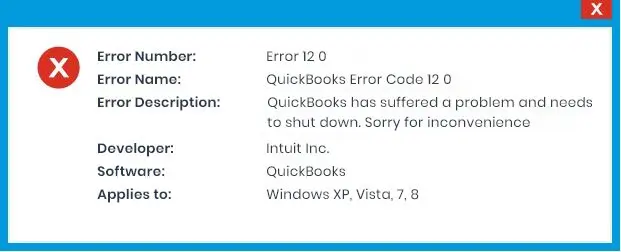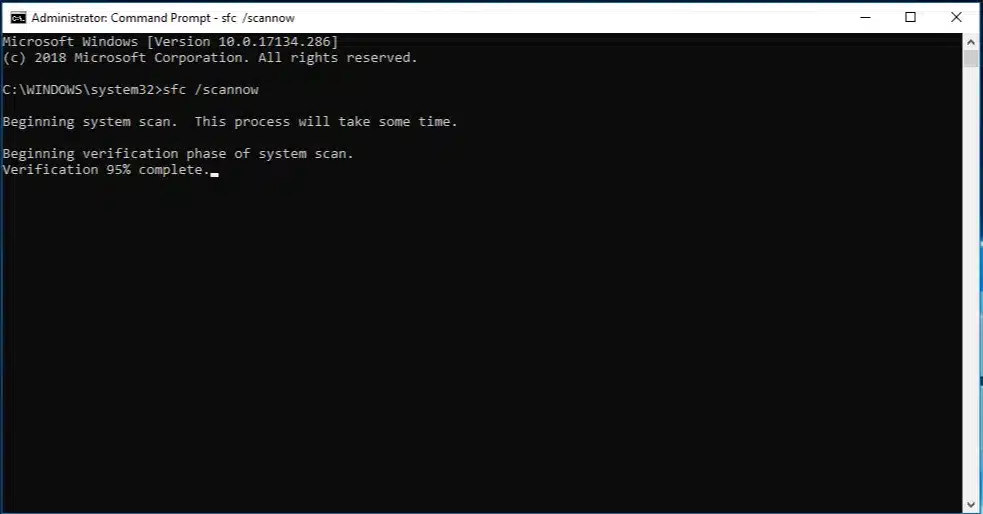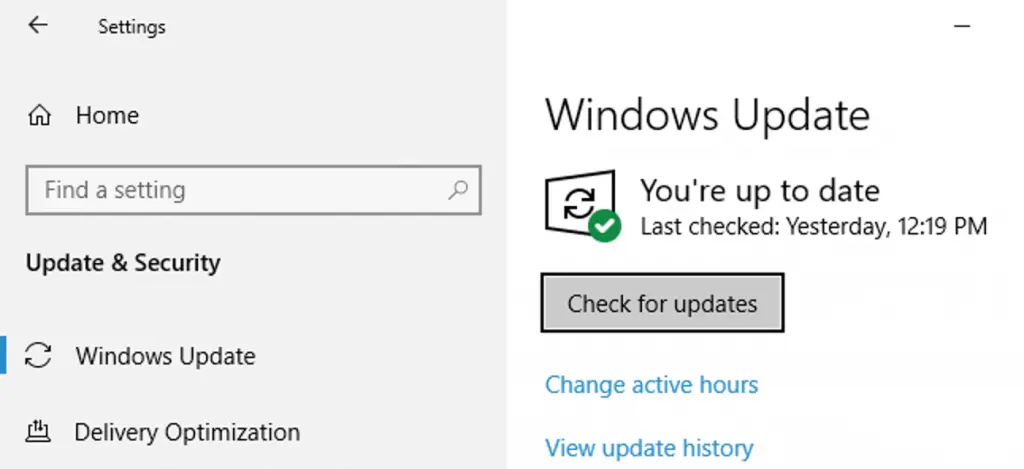How to Repair QuickBooks Error Code 12, 0?
Error Code (-12,0) can cause hindrance and interruption in the application. Proper permission and administrative rights are necessary for every Windows application to access system resources, and QuickBooks requires the same.
This error occurs when QuickBooks
does not have administrator permission on Windows, resulting in an error
message. This blog provides a comprehensive guide with details on the error's
meaning, causes, and solutions for troubleshooting.
A brief review of QuickBooks Error 12,0
QuickBooks error code 12, 0 occurs when the user lacks sufficient admin permissions to
perform certain QuickBooks functions. This error may result from incorrect
system settings or changes in the Windows registry. When this runtime error
occurs, QuickBooks may hang or crash during use. As users may find it difficult
to share files or perform other admin-level operations, finding an effective
solution is critical. To do so, it is important to identify the root causes of
the error, which we will explore below.
Causes of QuickBooks Error 12,0
●
One of the
most significant causes can be that the registry is either absent or has been
erased.
●
The presence
of a malfunction in the system can also be a reason for this.
●
The user may
also encounter this problem if there are any inaccurate entries.
●
A damaged
registry of Windows can also initiate this error.
●
This issue
can also occur if the software has not been installed correctly.
Signs of QuickBooks Error 12,0
●
An easy
indicator of the problem is the appearance of the error message itself.
●
Another
indication could be if the windows are not responding correctly.
●
The freezing
of the system is also a possible sign.
●
A program
window or QuickBooks may crash unexpectedly while in use.
●
Windows may
shut down automatically to prevent any damage to the system.
DIY Methods to Fix QuickBooks
Error 12,0
Checkout these quick methods in
order to rectify the QuickBooks error message 12,0:
Method 1: Use the Scan Now Command
●
To begin,
click on the 'Start' button.
●
Next,
navigate to the search box and type in 'Command'.
●
Press the 'Enter'
key.
●
Hold down the
'Ctrl' and 'Shift' keys and press 'Enter'.
●
This will
prompt a permission dialog box to appear.
●
Click on the 'Yes'
button.
●
A black box
with a blinking cursor will appear on the screen.
●
Type in 'SFC/scannow'
and press the 'Enter' key.
●
The System
File Checker will then scan for errors and other system file issues.
●
Follow the
on-screen instructions to complete the process.
Method 2: Update Windows
●
Click on the 'Start'
button.
●
Next, type 'Update'
in the search box and press 'Enter'.
●
This will
open the Windows update dialog box.
●
Now click on ‘Check
for updates’ and download if there is any.
●
Click on the 'Install
updates' button.
●
Follow the
on-screen instructions to complete the process.
Method 3: Enable the QBdatabaseserviceuser23 service
●
Firstly,
verify the version of QuickBooks you are using.
●
The service
name for QuickBooks will be QBDatabaseserviceuser23.0.
●
Open the 'Services.MSC'
program.
●
Check if the
mentioned service is still running or has stopped.
●
Select
QBdatabaseserviceuser23 and right-click on it.
●
Click on the 'Properties'
tab.
●
If the
service has stopped, click on the 'Start service' option.
●
Once done,
reopen the company file and check if the error has been resolved.
●
Check
permissions for the folder containing the company file by following the steps
below:
●
Right-click
on the Client data folder and select 'Properties'.
●
Choose the 'Security'
tab and check if you have permission to access the file.
●
If you do not
have permission, obtain access to the permission and try to open the company
file again.
Conclusion
The procedures mentioned above may
help resolve QuickBooks error code 12,0. If you continue to encounter
similar issues repeatedly, we recommend contacting our technical team at 1-800-615-2347.
Our QuickBooks payroll error support professionals are knowledgeable in identifying and fixing issues
from their root cause.









.jpg)
Comments
Post a Comment